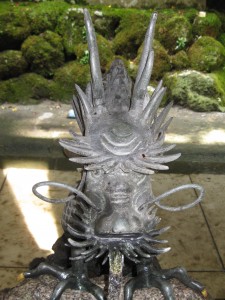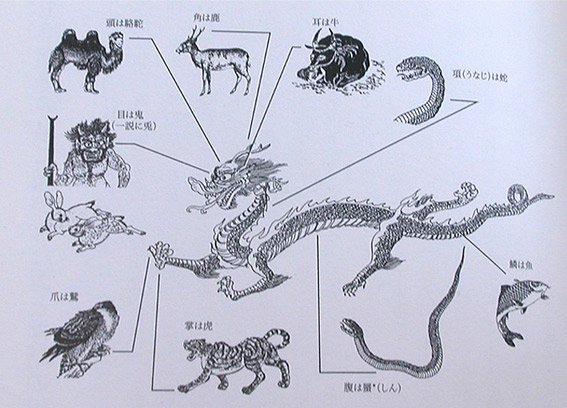Today in Kyoto it’s snowing, and after the warmth of the Philippines I’m freezing! Meanwhile, the year of the dragon is well under way. In an article in the Japan Times our friend Amy Chavez has great fun with the role of the dragon in Japanese folklore… well worth checking out for a humorous and fast-paced dragon ride. Click here.

In more serious vein, the dragon is just about ubiquitous in Japanese religion, for it’s not only a guardian of Buddhism but a much featured part of Shinto too. You’ll find dragons on the roofs of Zen temples (Jake Davis has a stunning shot of Kyoto’s Kennin-ji roof here). And you’ll often find dragons at water-basins in Shinto shrines, where they act as a symbol of good fortune. Unlike the fire-breathing monsters of the Western tradition, Japanese dragons tend to be benevolent.
It’s said the dragon originated in China in ancient times, long before the arrival of Buddhism with which it later became associated. My supposition would be that immigrants from the continent brought tales of the mythical creature to Japan, which came to haunt the Japanese imagination. It helps explain why the legends and folklore are so unclear about whether there’s a snake, serpent, dragon or monster involved.
The true dragon is a composite figure, made up of a variety of creatures. In this way, presumably, it has the attributes of all of them, hence its potency. Maybe there’s a theme there to work on this year: how to harness the strength of different animals. Unleash your inner dragon!
The picture below, taken from a defunct Japanese website, shows the Frankenstein manner in which the dragon is patched together. As can be seen, the body is indeed snake-like… (Incidentally, a curious bit of trivia: the Chinese dragon tends to have four claws, but the Japanese dragon three.)

Thanks to Mark Schumacher for drawing my attention to the above image and detailing the dragon’s provenance. For those interested in reading more, he’s suggested looking into water deities such as Suijin and Mizu no Kamisama which may well have predated Chinese and Korean immigration. See this page of his wonderful website: http://www.onmarkproductions.com/html/suijin.html

may I add your thoughts and the illustration here to the
Dragon Art Museum?
This year will bring a lot more Dragon lore … Thanks for all you do!
Gabi from Okayama.
woops, this did not get my link
http://dragondarumamuseum.blogspot.com/2012/01/dragon-within.html
I hope it works now?
Gabi
Many thanks to Gabi for that… For those who don’t know, Gabi runs an amazingly extensive blog at http://darumasan.blogspot.com/ “Welcome to the Daruma Museum
and the darumapedia !,” it declares, “Here you find information about Japanese culture,
with Daruma san and with Haiku as your guide.”